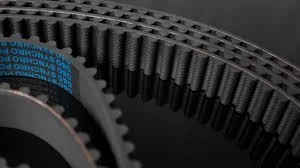- Arabic
- French
- Russian
- Spanish
- Portuguese
- Turkish
- Armenian
- English
- Albanian
- Amharic
- Azerbaijani
- Basque
- Belarusian
- Bengali
- Bosnian
- Bulgarian
- Catalan
- Cebuano
- Corsican
- Croatian
- Czech
- Danish
- Dutch
- Afrikaans
- Esperanto
- Estonian
- Finnish
- Frisian
- Galician
- Georgian
- German
- Greek
- Gujarati
- Haitian Creole
- hausa
- hawaiian
- Hebrew
- Hindi
- Miao
- Hungarian
- Icelandic
- igbo
- Indonesian
- irish
- Italian
- Japanese
- Javanese
- Kannada
- kazakh
- Khmer
- Rwandese
- Korean
- Kurdish
- Kyrgyz
- Lao
- Latin
- Latvian
- Lithuanian
- Luxembourgish
- Macedonian
- Malgashi
- Malay
- Malayalam
- Maltese
- Maori
- Marathi
- Mongolian
- Myanmar
- Nepali
- Norwegian
- Norwegian
- Occitan
- Pashto
- Persian
- Polish
- Punjabi
- Romanian
- Samoan
- Scottish Gaelic
- Serbian
- Sesotho
- Shona
- Sindhi
- Sinhala
- Slovak
- Slovenian
- Somali
- Sundanese
- Swahili
- Swedish
- Tagalog
- Tajik
- Tamil
- Tatar
- Telugu
- Thai
- Turkmen
- Ukrainian
- Urdu
- Uighur
- Uzbek
- Vietnamese
- Welsh
- Bantu
- Yiddish
- Yoruba
- Zulu
wrz . 03, 2024 00:35 Back to list
timing belt tensioner
Understanding Timing Belt Tensioners Essential Components for Engine Performance
The timing belt tensioner is a crucial component in internal combustion engines, playing a vital role in maintaining optimal performance and reliability. Timing belts, which are responsible for synchronizing the rotation of the crankshaft and camshaft, rely on proper tension to function effectively. Without a well-maintained tensioner, the entire engine system can be compromised, leading to performance issues and potential engine damage.
What is a Timing Belt Tensioner?
A timing belt tensioner is a pulley system designed to keep the timing belt taut. By applying the correct amount of pressure, it ensures that the belt remains aligned and properly positioned on the pulleys. The tensioner can be either mechanical or hydraulic. Mechanical tensioners rely on a spring-loaded mechanism to maintain tension, while hydraulic tensioners use engine oil pressure to adjust tension automatically. Both types serve the same fundamental purpose to maintain the appropriate tension on the timing belt throughout its operating life.
Why is Proper Tension Important?
The timing belt must be neither too loose nor too tight. If the belt is too loose, it may skip teeth, leading to a loss of synchronization between the crankshaft and camshaft. This can result in serious engine issues, including bent valves and piston damage. Conversely, if the belt is too tight, it can cause excessive wear on both the belt and pulleys, potentially leading to premature failure.
Signs of a Failing Timing Belt Tensioner
timing belt tensioner

Recognizing the signs of a failing timing belt tensioner is essential for preventing severe engine damage. Common symptoms include unusual noises such as squeaking or rattling, visible wear on the timing belt, or the check engine light illuminating on the dashboard. If you notice any of these signs, it's crucial to have your vehicle inspected by a qualified mechanic as soon as possible.
Replacement and Maintenance
Timing belt tensioners are typically replaced during scheduled timing belt changes, usually every 60,000 to 100,000 miles, depending on the manufacturer's recommendations. Regular maintenance is essential to ensure the longevity of the timing belt and tensioner. This includes checking for proper tension and inspecting for signs of wear or damage.
When replacing a timing belt tensioner, it is advisable to change the timing belt itself and any other related components, such as pulleys and water pumps, depending on their condition. This not only saves on labor costs but ensures that the entire system operates smoothly.
Conclusion
The timing belt tensioner is a small but critical component of an engine's timing system. Understanding its function and signs of failure can help vehicle owners maintain their engines effectively. Regular inspections and timely replacements can prevent costly repairs and ensure that your engine runs smoothly for many miles. Always refer to your vehicle's manufacturer guidelines for the best maintenance practices to keep your engine in top condition.
-
Korean Auto Parts Timing Belt 24312-37500 For Hyundai/Kia
NewsMar.07,2025
-
7PK2300 90916-T2024 RIBBED BELT POLY V BELT PK BELT
NewsMar.07,2025
-
Chinese Auto Belt Factory 310-2M-22 For BMW/Mercedes-Benz
NewsMar.07,2025
-
Chinese Auto Belt Factory 310-2M-22 For BMW/Mercedes-Benz
NewsMar.07,2025
-
90916-02660 PK Belt 6PK1680 For Toyota
NewsMar.07,2025
-
drive belt serpentine belt
NewsMar.07,2025

